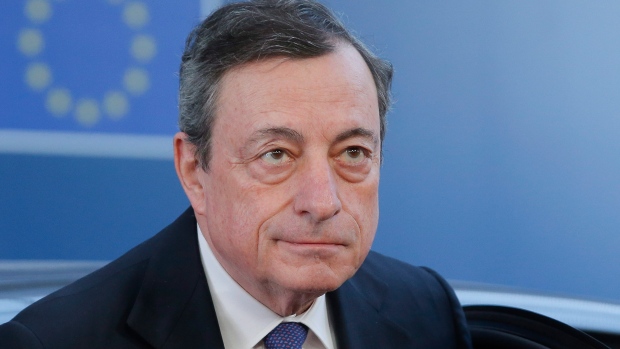Apr 10, 2019
ECB keeps policy unchanged as Euro-area economy faces new risks
, Bloomberg News

European Central Bank officials reiterated their pledge to keep interest rates at record lows, giving themselves time to assess prospects for the euro area’s weakened economy as it confronts new risks.
Five weeks after presenting a new long-term lending program, the ECB held off announcing more details in its policy statement on Wednesday. Uncertainties from global trade continue to cloud the region’s outlook, and the Governing Council may wait until June before deciding on how much stimulus will be needed.
The so-called TLTRO-III plan is designed to maintain favourable lending conditions at a time of slowing growth. It will supplement ultra-low borrowing costs -- which will remain at their present levels until at least the end of the year -- and the reinvestment of maturing bonds purchased during quantitative easing.
President Mario Draghi is set to hold a media briefing at 2:30 p.m. in Frankfurt, where the focus will be on the Governing Council’s assessment of the risks to the economic outlook. The ECB has predicted a growth pickup in the second half, but that scenario is being challenged by continuously weak numbers that also contributed to a downward revision of the IMF’s global outlook this week.
New threats of U.S. import tariffs and wrestling over the terms of the U.K.’s departure from the European Union are weighing on sentiment. EU leaders are meeting in Brussels on Wednesday to decide whether to delay Brexit by as much as a year.
More details about the state of the U.S. economy will be revealed when the minutes of the Federal Reserve’s March 19-20 policy meeting are published at 2 p.m. in Washington.
Many of Europe’s domestic woes are concentrated in Germany’s industrial sector, but momentum is also slowing in other large economies. The Italian government cut its growth target to 0.2 per cent from 1 per cent on Tuesday, and euro-area expansion may cool to 1.2 per cent this year from 1.8 per cent in 2018.
While Draghi has expressed confidence that the region’s current soft patch “doesn’t necessarily foreshadow a serious slump,” officials have started floating ideas for how they might provide additional support.
A discussion about mitigating the side effects of negative interest rates has grown louder in recent weeks, after banks warned that the policy may harm rather than help lending. Yet ECB committees, whose work is often the basis for formal policy proposals, haven’t discussed so-called tiering, according to people with knowledge of the matter.
--With assistance from Catarina Saraiva, Kristian Siedenburg, Paul Gordon, Craig Stirling, Piotr Skolimowski, Catherine Bosley, Zoe Schneeweiss, Iain Rogers and Chad Thomas